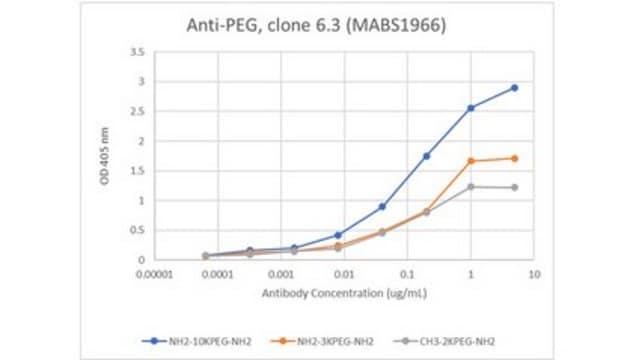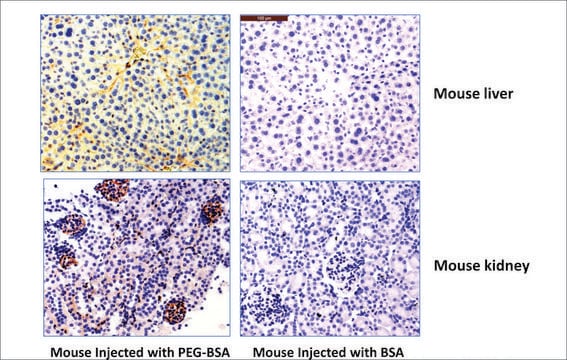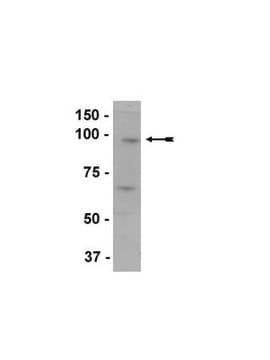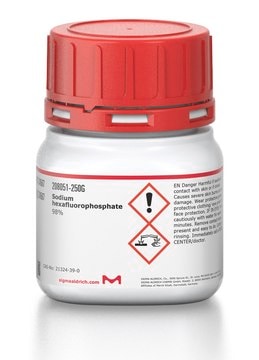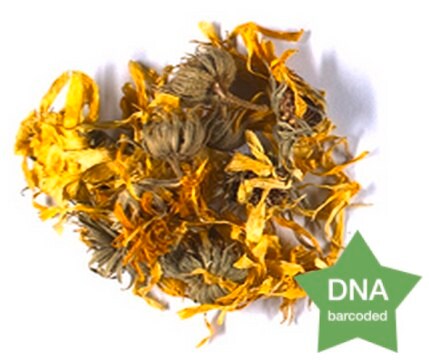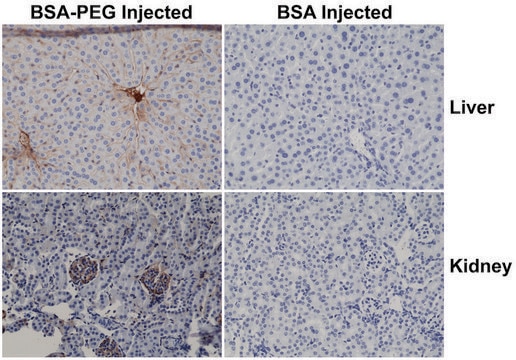MABS1214
Anti-PEG (methoxy group) Antibody, clone RM105
clone RM105, from rabbit, purified by affinity chromatography
Synonyme(s) :
PEG, pegylation, methoxy group, Polyethylene glycol, polyethylene oxide, PEO, polyoxyethylene, POE
About This Item
Produits recommandés
Source biologique
rabbit
Niveau de qualité
Forme d'anticorps
purified immunoglobulin
Type de produit anticorps
primary antibodies
Clone
RM105, monoclonal
Produit purifié par
affinity chromatography
Réactivité de l'espèce (prédite par homologie)
all
Technique(s)
ELISA: suitable
immunohistochemistry: suitable
western blot: suitable
Isotype
IgG
Conditions d'expédition
wet ice
Modification post-traductionnelle de la cible
unmodified
Description générale
Immunogène
Application
ELISA Analysis: Multiple concentrations of this antibody was used to detect three different BSA-PEG conjugates (5K, 40K and 40K branched)
Signaling
Epitope Tags
Qualité
Western Blotting Analysis: A 1:1;000 dilution of this antibody detected PEG (methoxy group) on conjugated recombinant BSA
Description de la cible
Forme physique
Stockage et stabilité
Autres remarques
Clause de non-responsabilité
Not finding the right product?
Try our Outil de sélection de produits.
Code de la classe de stockage
12 - Non Combustible Liquids
Classe de danger pour l'eau (WGK)
WGK 2
Point d'éclair (°F)
Not applicable
Point d'éclair (°C)
Not applicable
Certificats d'analyse (COA)
Recherchez un Certificats d'analyse (COA) en saisissant le numéro de lot du produit. Les numéros de lot figurent sur l'étiquette du produit après les mots "Lot" ou "Batch".
Déjà en possession de ce produit ?
Retrouvez la documentation relative aux produits que vous avez récemment achetés dans la Bibliothèque de documents.
Notre équipe de scientifiques dispose d'une expérience dans tous les secteurs de la recherche, notamment en sciences de la vie, science des matériaux, synthèse chimique, chromatographie, analyse et dans de nombreux autres domaines..
Contacter notre Service technique